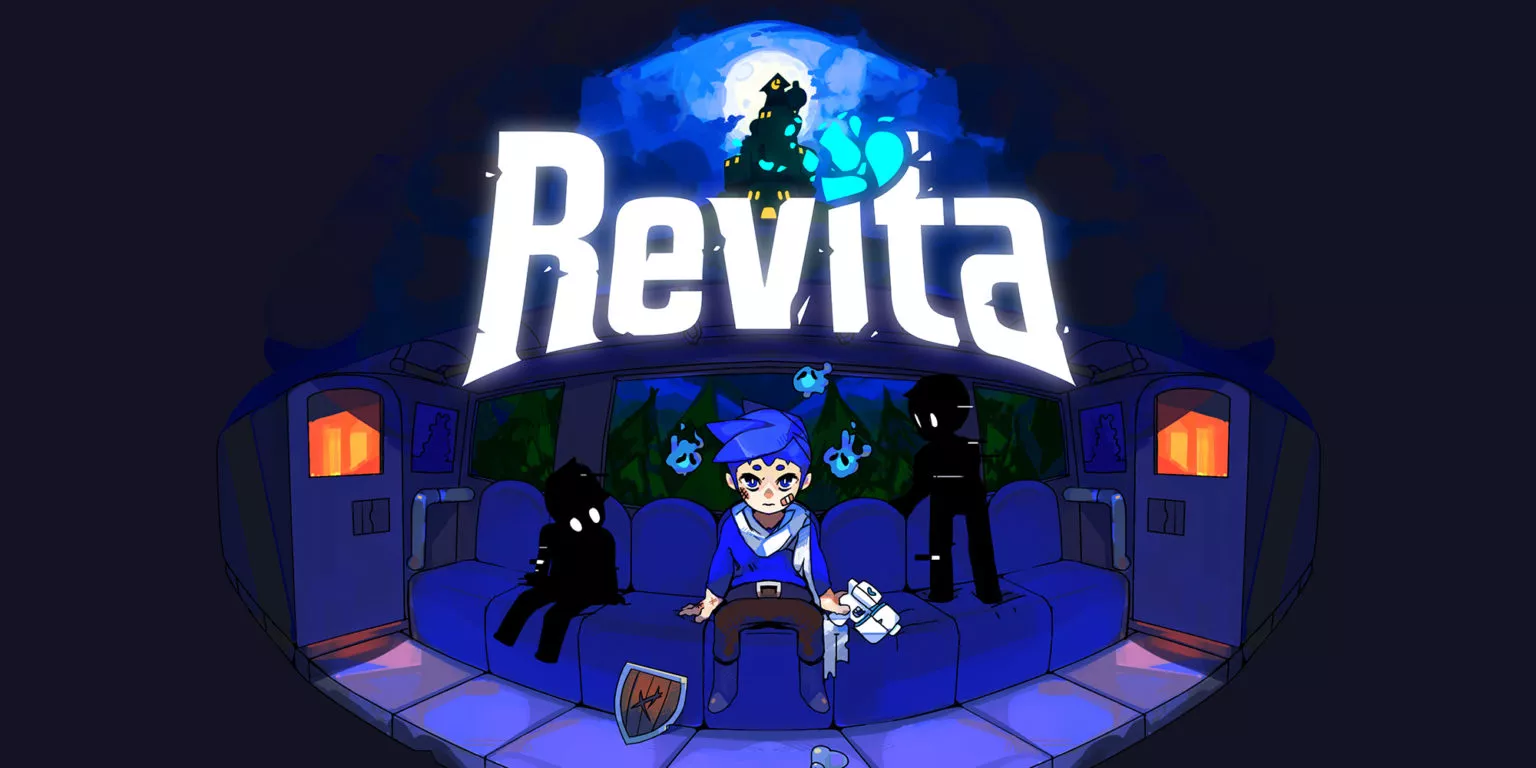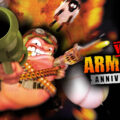They say that practice makes perfect and this is most definitely the case when it comes to roguelike games, where the stakes are high and the margin for error small. The W.A.S.D. event turned us on to a promising upcoming entry in the genre in Revita from BenStar Games. Now fully released and racing along the tracks – I vaulted the barriers, outran the transport police and slipped between the doors to board this hype train that is very much worth the price of admission!
At A Glance
| Scores | |
| Visuals | 7 /10 |
| Sound | 8 /10 |
| Gameplay | 7 /10 |
| Overall | 7 /10 |
| Positives | + Well balanced risk-reward upgrade mechanics + Tonnes of great accessibility options + Addictive ‘I can do better’ gameplay |
| Negatives | – Controls unwieldy on Joy Cons – Story aspects overly vague – Unnecessary loading between levels |
| Price (When Reviewed) | £15.49 |
| Our Playtime | 15 hours 45 mins |
| Available On | Nintendo Switch, PC |
Revita is an action-packed roguelike that doesn’t waste any time in separating itself from the pack. Gone is the genre-standard isometric view and sprawling dungeons, and ushered in are a series of tightly packed rooms with side-scrolling visuals and some simple platforming elements too. You take on the role of an unnamed child who has awoken on a strange metro train with no memory of what’s going on. Armed with a ghostly pistol known as a Soul Gun, and a strange yearning to reach the top of a nearby tower, you must battle your way through a series of subway stations to overcome your demons and regain your memory. That’s no easy feat though, with a myriad of tricky enemies and some genuinely difficult bosses to overcome to reach your goal.
It’s a twin-stick affair and the decision to use this set-up for a side-scroller leads to an interesting button configuration, since you still routinely need to jump and shoot without taking either thumb off the sticks. With shoot and dash/dodge bound to the ever-trusty ZR and ZL triggers respectively, this means that jump is tied to the R button which feels incredibly foreign the first few hours that you play the game. Sadly, this reliance on the shoulder buttons is a real hindrance for Nintendo Switch players using Joy Con controllers, as the buttons are so small and close together that it’s really quite uncomfortable to play for any great length of time. I was thankful that I had a pro controller available, but despite the larger controller making play a lot more comfortable, I did often find myself getting my buttons muddled up in some of the more stressful moments since the bindings are just so untraditional and not as reflexive as in similar titles.
The game is presented with pixel art graphics that are certainly attractive without being overly polished. Characters are depicted in cute, chunky sprites and are tied together with a pale-faced kabuki style that is incredibly characterful. And while the characters and enemies are decent enough, it’s the bosses that really stand out; they all have unique looks while maintaining a consistent style that makes them incredibly memorable. The level backgrounds are vying for attention too, and follow the dark and dingy palette that’s in keeping with the games’ themes. The well drawn pieces have some great little details dotted around that really add flavour to each area. The sound department isn’t too shabby either, with a good mix of catchy arcade-style tunes and slow and sombre pieces that manage to express the motifs of the game incredibly well. One of the nuances that I really enjoyed is that there are a number of variations of each level’s theme that can fade in and out depending on the enemies in the room or even some random gameplay events – it’s impressive at how differently the same levels feel with just a slightly amended backing track.
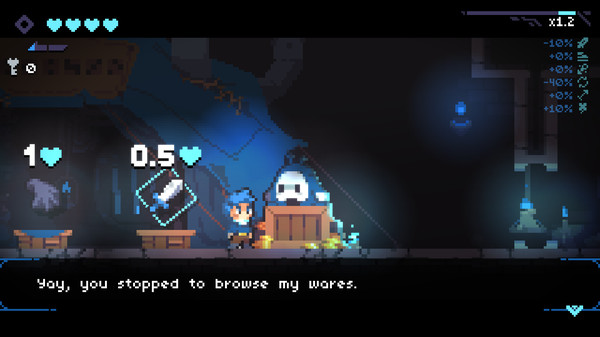
Like most roguelikes, much of Revita is procedurally generated which means that you have an individual experience each time that you play. You progress through a series of areas, each 10 rooms in length, before meeting the level’s end boss – destroy him and you can hop onto the metro to progress to the next area. Along the way you’ll come across randomly generated bonus rooms containing a myriad of weird and wonderful folks and goodies, collect a huge assortment of items and even stumble into random mini-boss encounters. I quite simply could not get enough – as each run ended I immediately wanted to start on another one, convinced that I could do better.
The quick nature of the gameplay, the relatively short length of each run and the sheer volume of unlockables makes Revita a very addictive title indeed. You’ll want to keep diving into new runs to play with new gear and fresh opportunities. Just when I thought I was going to put it down, a new item sprung up and I just had to have one more go to see what it’s all about. In fact, you’ll be pressed into a lot of play-throughs if you want to get into the meat of the story, which is drip fed at a glacial rate, and might be a little vague for some players. There’s a fantastic amount of replay value in Revita; I’ve put a good few hours into it already but I know I’m not even close to finding all of its secrets – in fact, I’ve barely even scratched the surface –and it’s a game I see myself playing for some time.
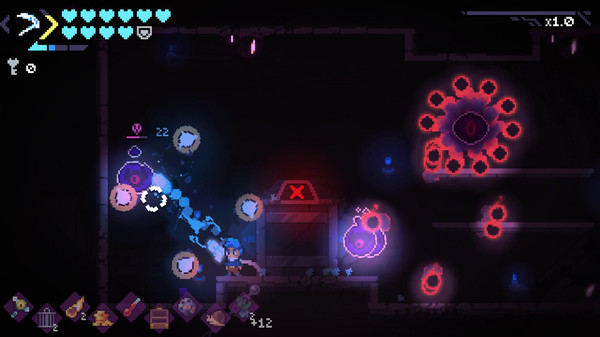
But what really sets Revita apart from other roguelikes are the clever upgrade mechanics. Unlike most games where better equipment and helpful trinkets are dropped by baddies or paid for with looted coins at a shop, Revita puts a much more deadly price on improving your character – your health. Once per floor you encounter a statue of the Mother, where you may choose how much of your life you’re willing to sacrifice in exchange for the goods on offer. Some of these items have a huge in-game impact but (of course) come with an increased cost of life, leaving you with less breathing room as you continue through your run.
This theme continues throughout the entire game, where chests, shops, and other altars all charge in health rather than currency, and you’re constantly asked to weigh the helpfulness of what’s on offer against the confidence in your abilities to decide how to proceed. You can restore your health by collecting souls from fallen enemies and using them to recharge yourself, and can even increase your health past your current maximum if you’re skilled enough to harvest enough souls while remaining at full life. But with some tricky encounters thrown at you, buying every top-end upgrade available to you isn’t always the best way to go since it then only takes a couple of mistakes to derail your run. Revita routinely gives you the chance to play the ultimate game of risk and reward, and it’s one of the key reasons that the game is so enjoyable.
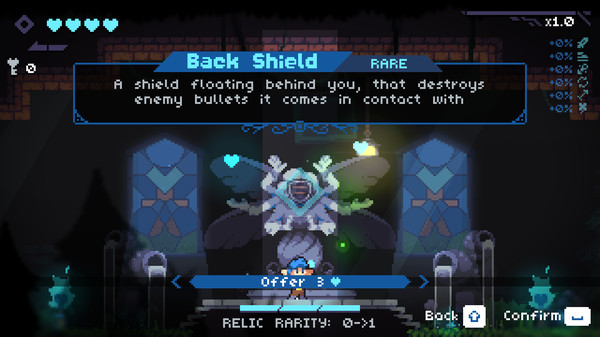
As with many indie titles from small studios, playing an early version of the game did come with some technical hiccups – I crashed out a couple of times, had achievements and items unlock that I hadn’t activated yet and experienced some areas where level audio was overlapping. There was a decent day-one patch that fixed most of the more obvious problems, though I’m aware that some minor elements still remain. Thankfully BenStar Games have been incredibly forthcoming about upcoming fixes and diligent in applying them as fast as possible, so I’m confident that Revita will be a fully polished entity in no time at all. One of the issues that bugged me that I don’t think will go away are the hit-and-miss loading times on Switch – the speed of transitioning between floors fluctuates incredibly and there are times when you’re staring at a black screen for up to 10 seconds while you wait for the next room to load. This might not sound like much, but when the rooms themselves are small and only contain a few enemies each, it can sometimes feel like you’re loading as much as you’re playing.
Despite thoroughly enjoying Revita, I’ve discovered that I’m not great at it and tend to regularly fall at some of the later hurdles. Thankfully, if you’re like me and are struggling with any element of the game, BenStar Games have included a whole host of accessibility options to make the game enjoyable for players of all abilities. Whether it’s some visual alterations to help in recognition or simply slowing the game down to give you more time to react, there are a tonne of commendable alteration options that are very well considered and implemented.
Revita is a wonderfully addictive twin-stick roguelike that sports great retro graphics and a catchy soundtrack. While the controls might feel a little unwieldy for Switch players using Joy Cons, players using a pro controller (or playing on a console with more player-friendly peripherals!) will have a whale of a time blasting their way towards the tower to regain their memories. The risk-reward mechanics make every decision really count, and with a host of memorable bosses, awesome randomly generated encounters and boat loads of unlockables, it’s a title that you’ll be hooked on for hours on end despite some slight teething problems.
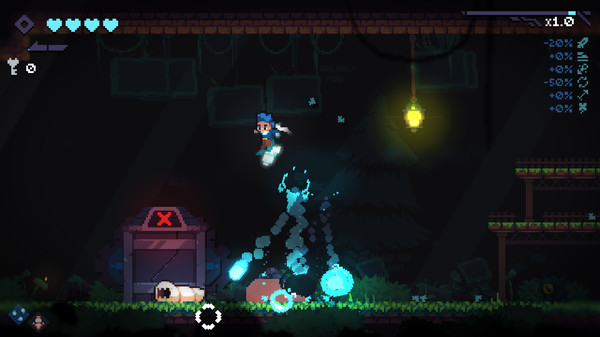
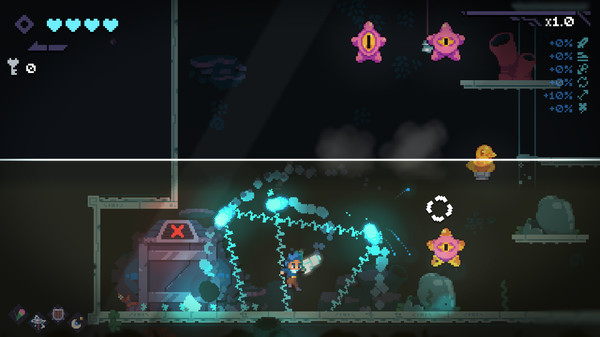
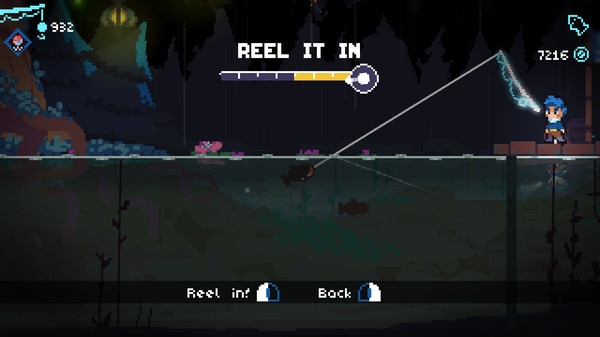
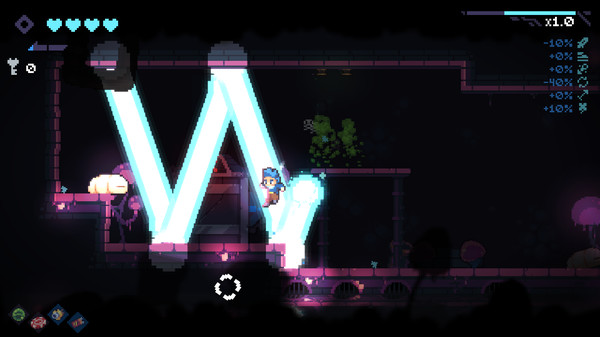
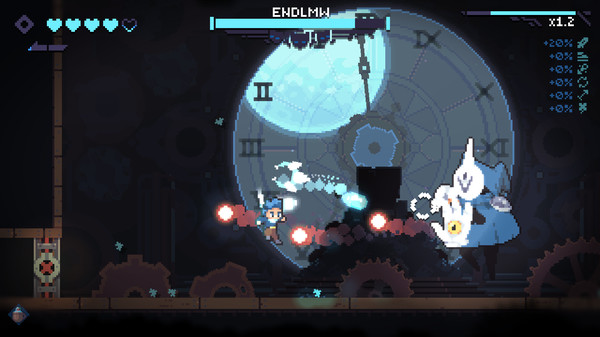
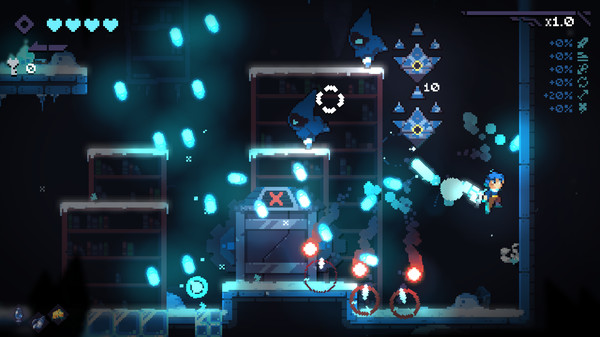
In the interest of full disclosure, VGamingNews was provided with a copy of the game in order to conduct this review.

